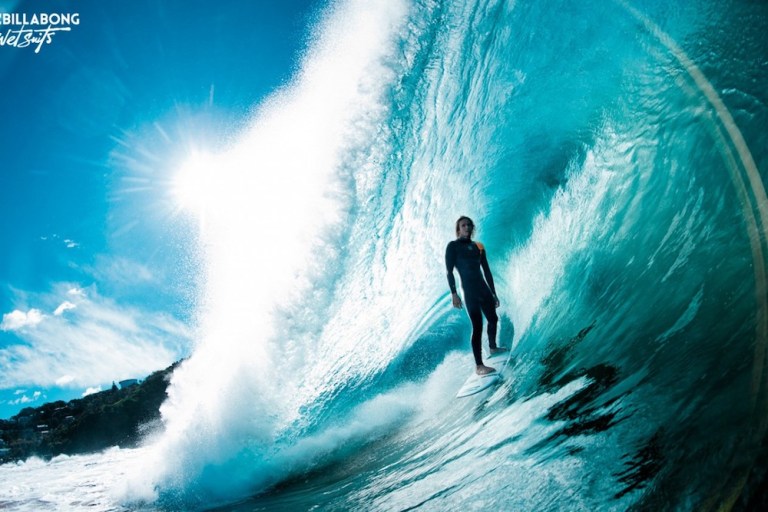
Billabong is a bigger company than most people might imagine. Apart from its well-known namesake brand, Billabong is also the parent behind a host of surf and beach-lifestyle related firms: RVCA, Element, Kustom, Palmers Surf, Xcel, Honolua Surf Co. and Von Zipper are all Billabong brands (Billabrands).
But the 2010s have not exactly been kind to the popular “surf brands” of the 1990s — Wet Seal and Pacific Sunwear, the standard bearer mall chains for Billabong shoppers, have both declared bankruptcy within the last 18 months, and the surf has looked rough for Billabong as of late, too. The Australia-based firm recently dealt with declining revenue and increasingly concerned investors.
In its last quarterly earnings statement, Billabong reported a net loss of $77.1 million for the first half of the year, tripling its entire $23.7 million loss for the previous year. CEO Neil Fiske noted market conditions, particularly in the company’s home nation of Australia, remain difficult.
Those difficulties have translated into some fairly brutal results. Revenue dropped 8.8 percent to $1 billion. Most damaging was the company’s write offs of the value of goodwill it attaches to its brands. RVCA goodwill value was cut from $78.1 million to zero. The Xcel write-down was $4.4 million, while $518,000 was cut from the value of the Honolua brand.
Despite the rather sobering results — and a dearth of retailers specializing in Billabong’s vertical — Fiske believes the firm is actually demonstrating signs of turning a corner this quarter, and that it has many “opportunities for sustained earnings growth” ahead of it.
“The key to our ongoing success is the relevance of our brands,” Fiske said. “We continue to strengthen the connection with our customers, with global social media followership up 42 percent year-on-year to almost 37 million.”
Rebuilding Brand Identity Online
With in-store sales dropping but a growing online following, Billabong is rethinking its operations to focus on digitally streamlining operations. To that end, the firm has partnered with retail solutions provider Aptos to better develop a cloud-based, omnichannel platform for its customers.
“Aptos’ global presence, leading cloud-based technology and professional services and implementation team were important considerations in our selection process,” said Michael Yerkes, senior vice president of global operations at Billabong International Ltd.
As Billabong’s brands’ diffusion are beginning to work against the firm, the Apotos partnership will allow it to centralize and streamline those business operations. Customers do not like fragmented commerce experiences in general, and they are particularly intolerant if the commerce experience is not consistent across a single brand.
Moreover, Yerkes noted, Billabong’s target audience is comprised of millennials and Generation Z consumers, shoppers who have long since made their strong preference for digital channels and access known.
“Getting retail innovation and omnichannel transformation right is critical, requiring proven technology solutions, a rigorous implementation discipline and a spirit of collaboration and partnership,” said Noel Goggin, Aptos chief executive officer and culture leader. “Aptos’ global resources will ensure we’re there every step of the way to accelerate growth and speed-to-value, in lock-step with Billabong’s strategic vision and customer expectations.”
Aptos works with a variety of brands — more than 500 at last count — and has operations that have extended into 130,000 stores worldwide. DKNY, Cole Haan, Primark, New Balance, Movado, Trader Joe’s VF, Shoe Palace, Samsonite, J.McLaughlin, Forman Mills and The Buckle are among the better known and more readily-recognized partners.
Will a partnership with Aptos be enough to get Billabong hanging ten again?
The retailer, apart from its technical prowess and presence, has some work to do image-wise as it tries to successfully leverage its increasingly digital audience. A recent social media flare up over how the brand chose to represent women on its homepage hit a particularly discordant note, occurring at an unfortunate moment for a company working hard to establish it is hip to the times.
But, the first phase of evolving is making it technologically possible to do so. While it might not get the marketing team under control, offering shoppers a streamlined and consistent digital-to-physical shopping experience isn’t a bad place to start.
As for whether it will be enough for Billabong to turn a corner? Well, there are two quarters left in 2017 during which we should start seeing some evidence of that.